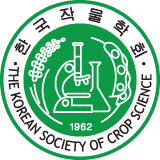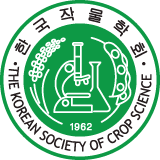Abstract
References
Information
Asakuma, S. 1958. Ecological studies of heading of rice. I. Relations between the days from seeding to heading and several conditions, II. The "basic vegetative growing habit", "sensibility to day-length", and "sensibility to temperature" of Japanese rice. Japanese J. Crop Sci. 27(1) : 61-66.
10.1626/jcs.27.61
KMA (Korea Meteorological Administration). 2022. http://data.kma.go.kr/cmmn/main.do. Last accessed on December 20, 2022.
KOSIS (Korean Statistical Information Service). 2021. http://kosis.kr/statisticsList/statisticsListIndex.do?menuId=M_02_02&vwcd=MT_BUKHAN&parmTabId=M_02_02#SelectStatsBoxDiv. Last accessed on July 12, 2022.
Moon, H.-P., D.-H. Kim, E.-G. Jeong, Y.-J. Won, H.-K. Park, J.-J. Kim, K.-H. Jeong, E.-K. Ahn, W.-J. Hyun, H.-M. Park, B.-J. Kim, S.-H. Cho, H.-G. Hwang, S.-Y. Cho, S.-Y. Kim, W.-S. Seo, H. Ju, and M. Oh. 2019. Handbook of rice varieties adaptable to North Korea. National Institute of Crop Science and Institute of Northern Agricultural Research. p. 127.
- Publisher :The Korean Society of Crop Science
- Publisher(Ko) :한국작물학회
- Journal Title :The Korean Journal of Crop Science
- Journal Title(Ko) :한국작물학회지
- Volume : 68
- No :3
- Pages :106-113
- Received Date : 2023-07-31
- Revised Date : 2023-08-10
- Accepted Date : 2023-08-11
- DOI :https://doi.org/10.7740/kjcs.2023.68.3.106




 The Korean Journal of Crop Science
The Korean Journal of Crop Science








